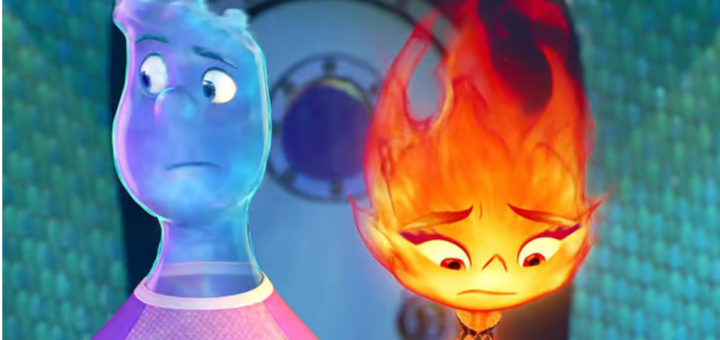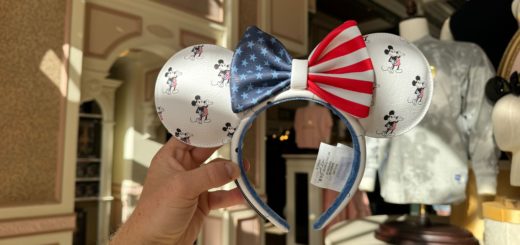How Pixar Used Cutting-Edge Technology To Bring “Elemental” To Life
While “Elemental” has not been the box office success that Pixar was hoping for, the film has been a hit with the audiances that have seen it.
The studio’s latest release currently holds an audience score of an “A” on Cinematic.
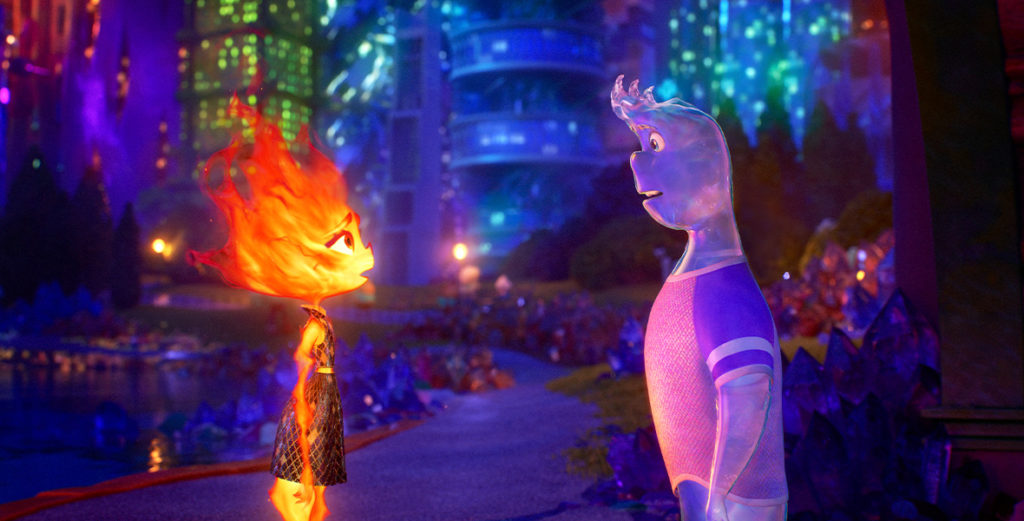

Photo: Disney/Pixar
Part of the buzz that “Elemental” has been able to generate, has been around the film’s stunning visuals.
A Clear Vision
When bringing the world of Element City to life, director Peter Sohn was clear about what he wanted from his main characters.


Photo: Korean American Story
From the onset, Sohn emphasized that Ember was fire (not on fire) and Wade was water (not a vessel holding water. To accomplish this look, animators had to strike a balance between reality and style.
“It was really important for Pete that Ember be made of fire, and that when she moved, she moved in a fire-like way and not adhere to a strict, skeletal structure,” visual effects supervisor Sanjay Bakshi explains. “For example, when she reaches for something, her arm can stretch and get really narrow, like fire can. Ember needed to be able to really change shape and be amorphous. While our animators have a lot of tools at their disposal to make a character like Ember angry—from changing her posture, her eyebrows, and her facial expression—we also wanted to change the characteristics of the fire when she got angry.”
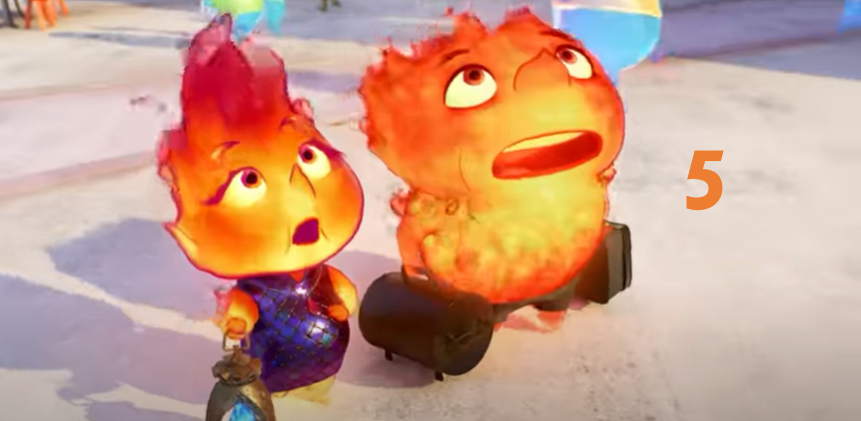

Photo:Disney/Pixar
Adding Time For Production
This is where effects supervisor Stephen Marshall and his team entered the picture.
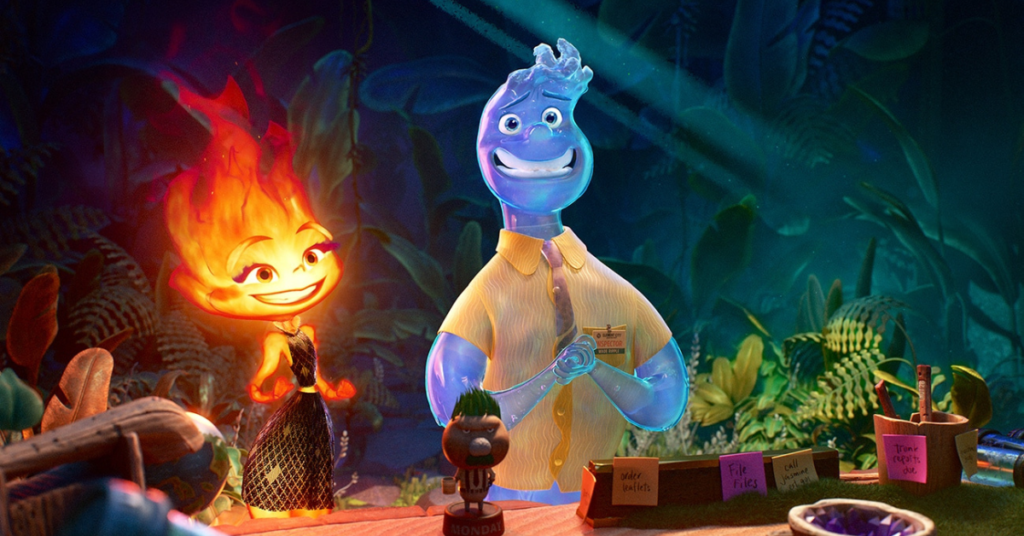

Photo: Disney
“A lot of it was asking ourselves, ‘How do we make Fire and Water sentient characters that have relatable emotions that aren’t ultra-distracting?’” Marshall says. “We developed a lot of that technology very early on, and it required a lot of facility resources to figure it out. This was technology we had never used before, like machine learning. A lot of it was about blowing up what we knew about our effects pipeline and building a new pipeline around it, knowing we were going to be working with departments we had never worked with before.”
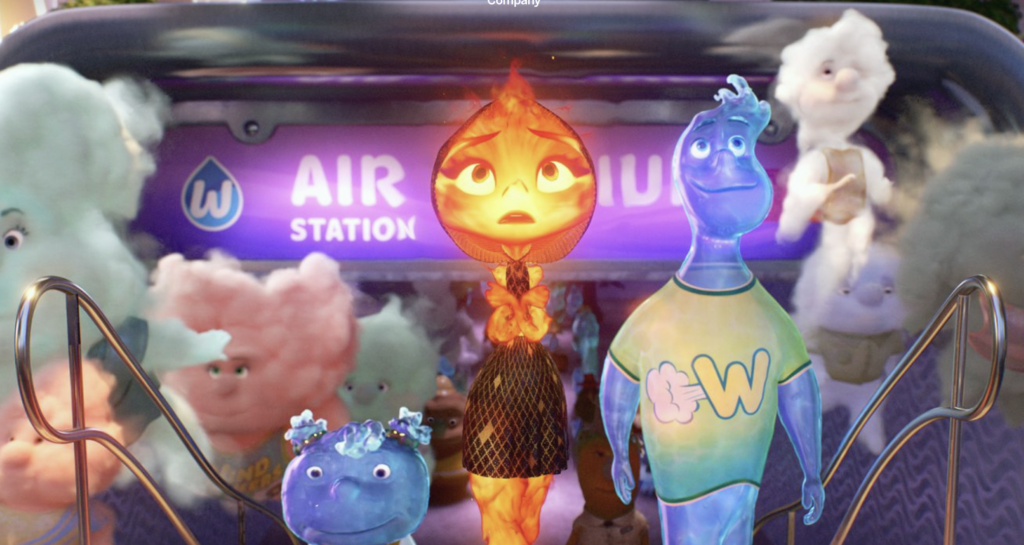

Photo: Pixar
In order to create Ember and Wade the way animators wanted, another phase of production was added to run simulators on characters in every frame of the film.
According to Marshall, filmmakers actually adjusted the film’s schedule to allow more time after animation to tackle the huge amount of effects and complex lighting needs.
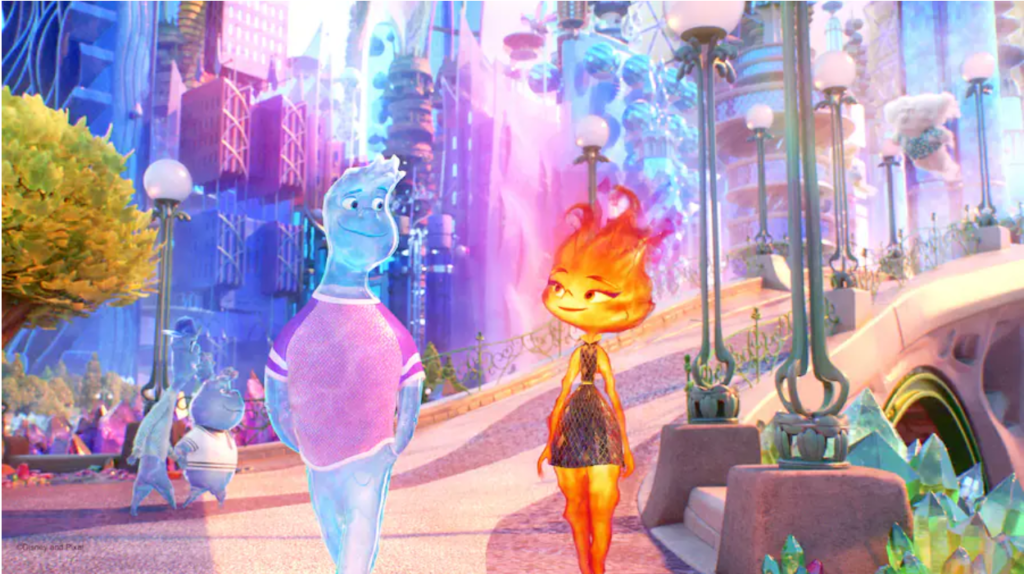

Photo: Disney
Calling On Zurich
In order to create Ember and other fire characters’ unique look, Pixar utilized the Disney Research Studios in Zurich.
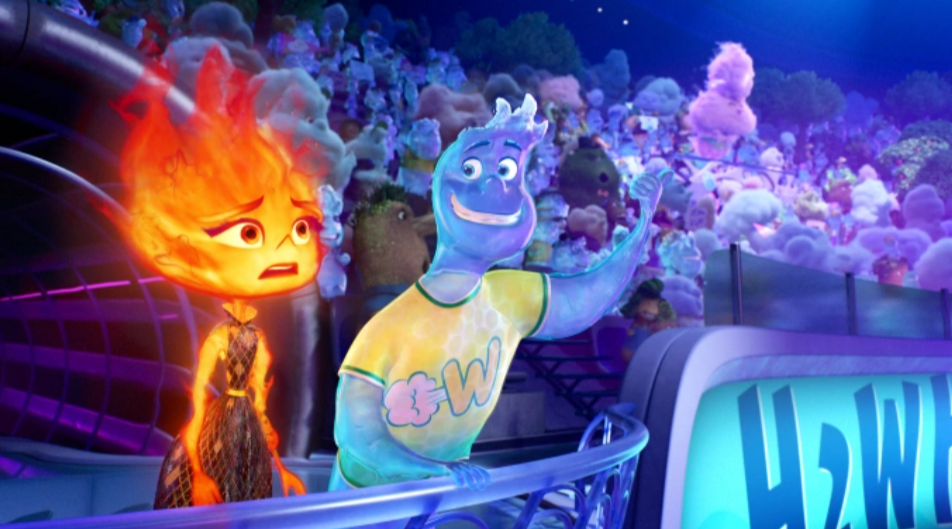

Photo: Pixar
According to Bakshi, this allowed them to “organize the flames into more stylized shapes using a machine learning technique called Volumetric Neural Style Transfer; it’s something we haven’t done before.” If the flames were “too realistic,” he adds, it would be “distracting and not as illustrative as we would have wanted.”
The team utilized techniques developed by crowds technical supervisor Paul Kanyuk and the Disney Research Studios Team. Bakshi notes that the new techniques developed “organize the flames into much more appealing shapes. It really unlocked a lot for us—like a magic trick! There’s no other way to do this that I’m aware of.”
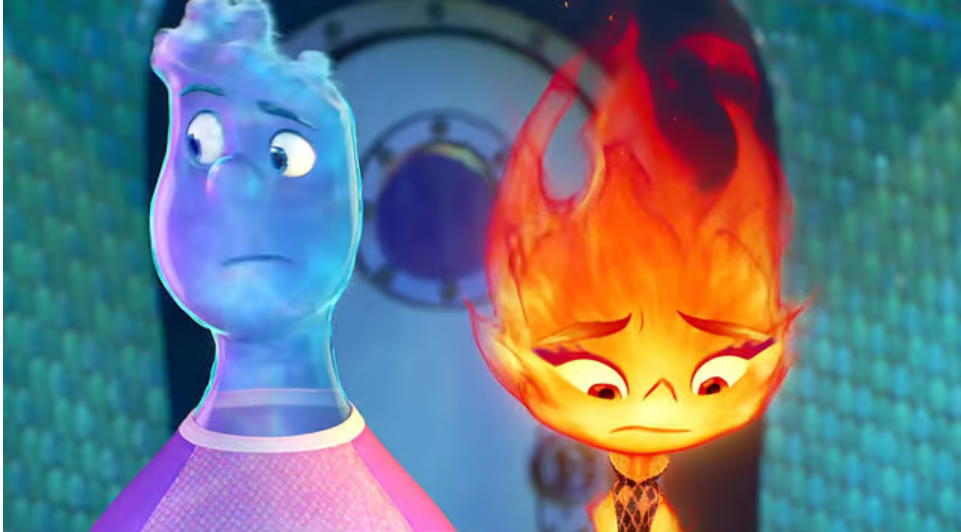

Photo: Also Pixar
In the end, all of the technical advances used to create “Elemental” were done to tell a better story.
“I don’t think people could connect with the characters on an emotional level” Bakshi concluded.
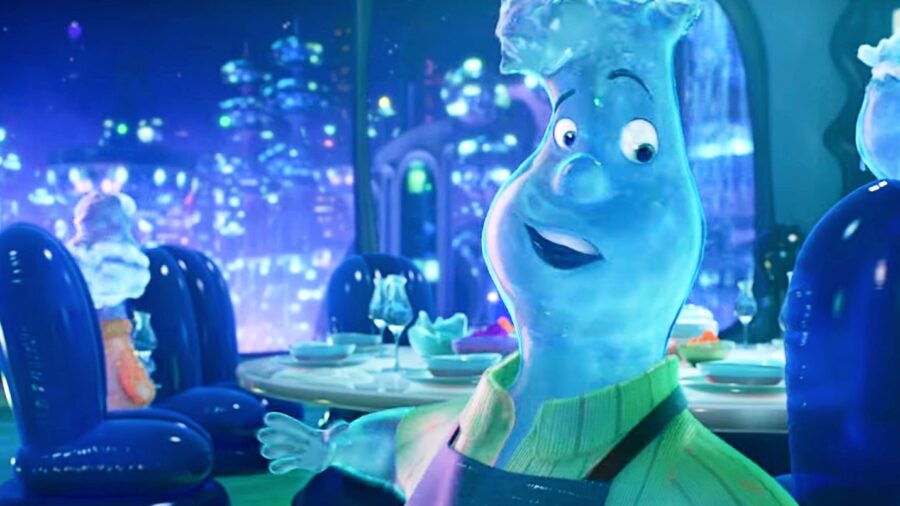

Photo: Also Pixar
Disney and Pixar’s Elemental is now playing in theaters.
Thanks for visiting MickeyBlog.com! Want to go to Disney? For a FREE quote on your next Disney vacation, please fill out the form below, and one of the agents from MickeyTravels, a Diamond Level Authorized Disney Vacation Planner, will be in touch soon!


